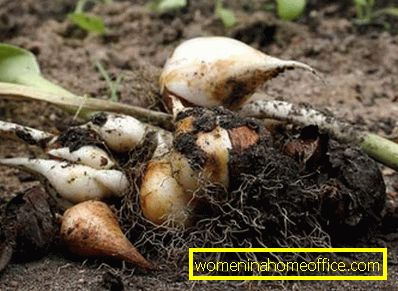Distillation of tulips at home
How nice to get a bouquet of tulips as a gift at any time of the year. If you are going to breed tulips, you should talk about forcing at home. What is distillation? Distillation of flowers - this is an event aimed at preparing flowers for flowering at an unusual time for them. Someone will say that it is unnatural, but then at a certain point in time there would not be such a large number of flowers in flower shops, because they all grow at different times. To make flowers grow in the period you need and forcing will help.

We immediately say that this is not a cheap pleasure and not at all easy. For distillation will require good farming, excellent soil with the necessary amount of fertilizer and trace elements. What you need to know the future "tulip" of forcing tulips, we will tell in this article.
What sort of tulips to choose for distillation?
View of tulips | Sort |
Early flowering(by January) | Brilliant Star, Dixis Favorite, Christmas Marvel, Miles Bridge, Lustig Battle, Olga, Erikot Beauty |
Medium Term (February-March) | Diplomat, London, Oxford, Oaks-Fords Elite, Parade, Scarborough, Vivex, Eric Hofse, Apeldoorn, Apeldoorn's Elite |
April | Hell Rem, America, Apel Dorn, Apeldoorn Elite, Burgundy Leys, Vivex, Gordon Cooper, Daydream, Kees Nelis, Lin vam der Mark, London, Oxford, Oxford Elite, Parade, Fringet Elegans, Hibernia, Eric Hofsier |
May | Aristocrat, Diplomat, London, Negrite, Oxford, Parade, Temple of Beauty, Hibernia |
How to prepare the planting material?
Planting material is a healthy, round bulb without damage. It is best to take bulbs “extra” or 1-parse weighing 30 g - for varieties from the class of Darwin hybrids and at least 25 g - for varieties from other classes. Before planting the bulb is better to clean the outer scales and notice the disease, by the way. Plus, a bulb without scales takes root faster.

The stages of forcing tulips at home
- Storing the bulbs after digging out of open ground. The first thing to think about is temperature. The names she can make a flower to bloom or not to bloom. After digging for a month, the bulbs are stored at a temperature of 20-23 degrees Celsius. Further for the same period it is necessary to maintain the temperature at 20 degrees, and then reduce to 17.
- Rooting
- Dislocation

Methods forcing tulips at home
In order to speed up the laying of all the flower organs in the cold and start cooling the bulbs as scheduled, there are two proven methods: agrotechnical and physico-chemical.
- In the first case, tulips are grown under the film and cut flowers. All this allows you to speed up the process of laying out all the organs of the future flower for 2-3 weeks.
- The second method, physicochemical, consists in the early digging of the bulbs. They are dug up as soon as yellowish spots appear on the scales. Then their week is kept at a temperature of +34 ° C. These bulbs are stored in the summer and before planting in the refrigerator.

Planting and rooting bulbs at home
Prepare the substrate: sand, peat, vermiculite, perlite, garden soil, wood ash, manure. All this mix. Next, put two of the three parts into containers and compact them, then spread them out and put them on top. After planting, pour abundantly with a solution of calcium nitrate and water (20 g per 10 l of water). Cover with earth again if the bulbs are washed. Now send the boxes to the cellar or cellar. There the temperature should be from 0 to 10 degrees Celsius.
Until mid-December, water the bulbs and check the humidity: it should be no more than 80%. By the end of the month, reduce the temperature to 4 degrees.
Proper distillation of tulips at home
Transfer the bulbs to a warm room for 3 weeks until they bloom. Raise the temperature slowly to 18 degrees and in parallel give more light. It is better to additionally highlight the bulbs for 5 hours a day. When the buds become color, reduce the temperature to 15 degrees, it will make them brighter and stronger. Do not forget to water daily and from time to time to feed.

Here you have beautiful and lovely plants, beautiful tulips. They are made by your hands with very hard work.
Forcing out any plants at home without enough experience is not easy. But the game is worth the candle! If you see your offspring, it is unlikely that you now give up this occupation. Perhaps this will become not only your hobby, but with time and business!
You will find a lot of useful and interesting information about tulips in the article Garden tulips: planting and care.